Keeping customers happy is critical to the success of your business. But with ever-increasing expectations, how can you be sure you’re doing enough?
It’s not enough to have good products. You need a holistic strategy to develop an excellent customer experience, or you’ll lose customers to companies that prioritize it.
To help you get up to speed, this article will define the customer experience and cover how the customer experience benefits your business. We’ll also highlight what a great customer experience looks like.
You’ll get actionable tips you can use to start improving your customer experience today.
What is customer experience?
Customer experience, also known as CX, is your customers' holistic perception of their experience with your business or brand.
CX is the result of every interaction a customer has with your business, from navigating your website to talking to customer service and receiving the product or service they bought from you.
CX also includes marketing campaigns, sales touchpoints, and, of course, customer service. Many people equate customer service with customer experience, but in reality, that’s just one small piece of the puzzle.
Why is customer experience so important?
Happy customers are more likely to be loyal customers. Loyal customers means repeat business and free word-of-mouth advertising for your brand.
The benefits of creating a stellar customer experience go even deeper. 75% of customers said they would spend more to buy from a company that has a good customer experience.
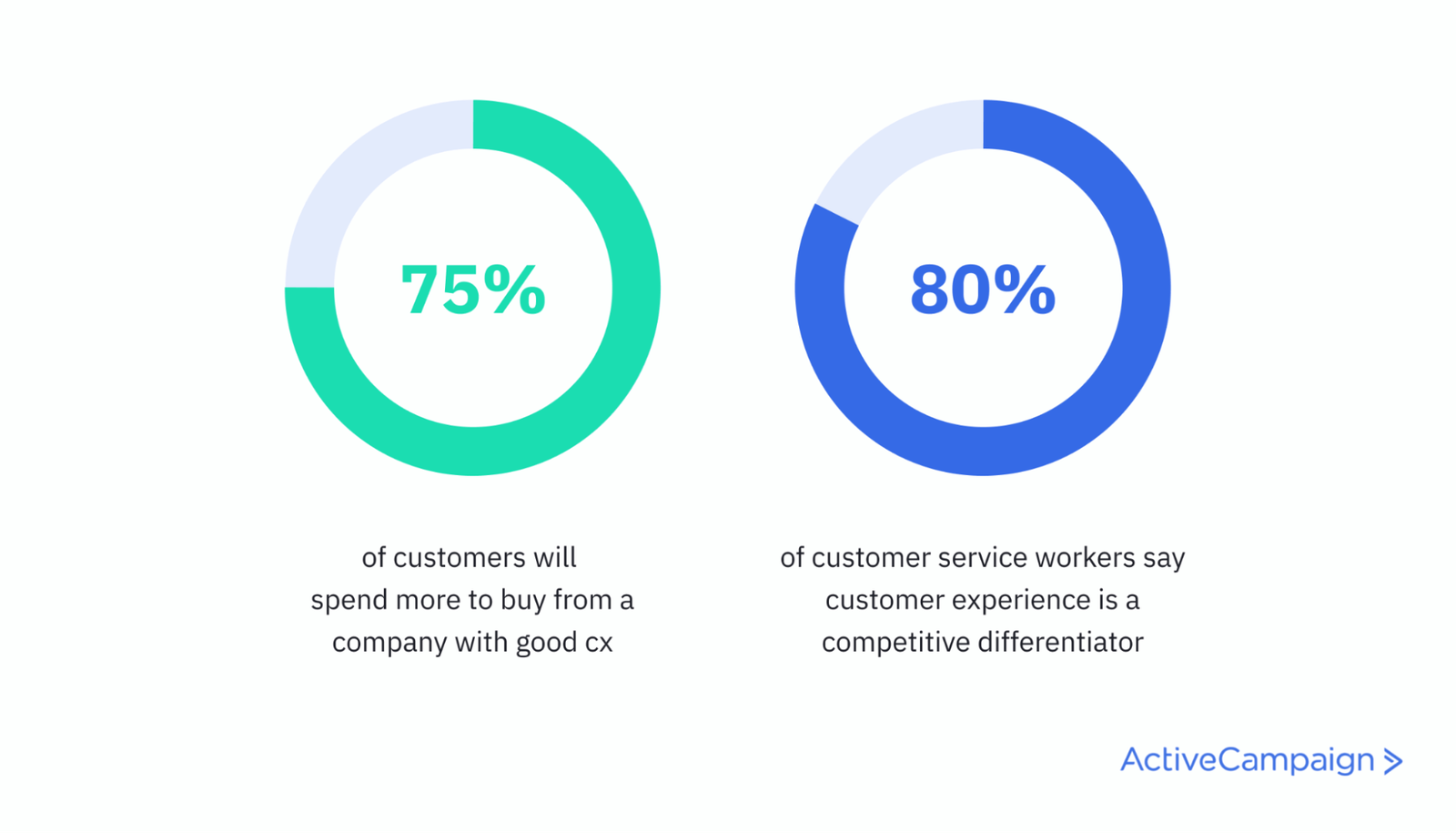
And more than 80% of customer service workers say providing a positive customer experience is a competitive advantage.
Because more and more customers are now demanding high-quality experiences from businesses, 45.9% of businesses said CX was a top priority for them in the next five years — more important than improving both pricing and product.
Do you really need a CX strategy?
Crafting a good customer experience doesn’t happen by accident. You need to think purposefully about how each customer interaction adds up to create that customer's experience.
A CX strategy also creates ways for you to quantitatively track, measure, and analyze your customer experience efforts.
For instance, your customer experience strategy defines when and how you’ll ask for customer feedback. You can choose specific points along the customer journey where you’ll ask questions about your efforts.
Your strategy also helps you think through exactly how you’ll measure things like customer satisfaction, customer loyalty, and customer retention. You might consider using metrics like net promoter score (NPS) or customer satisfaction (CSAT) averages and tracking them over time.
You can use ActiveCampaign’s approach to customer experience automation to help you build your initial customer experience strategy.
Here’s a peek at the four stages of our process:
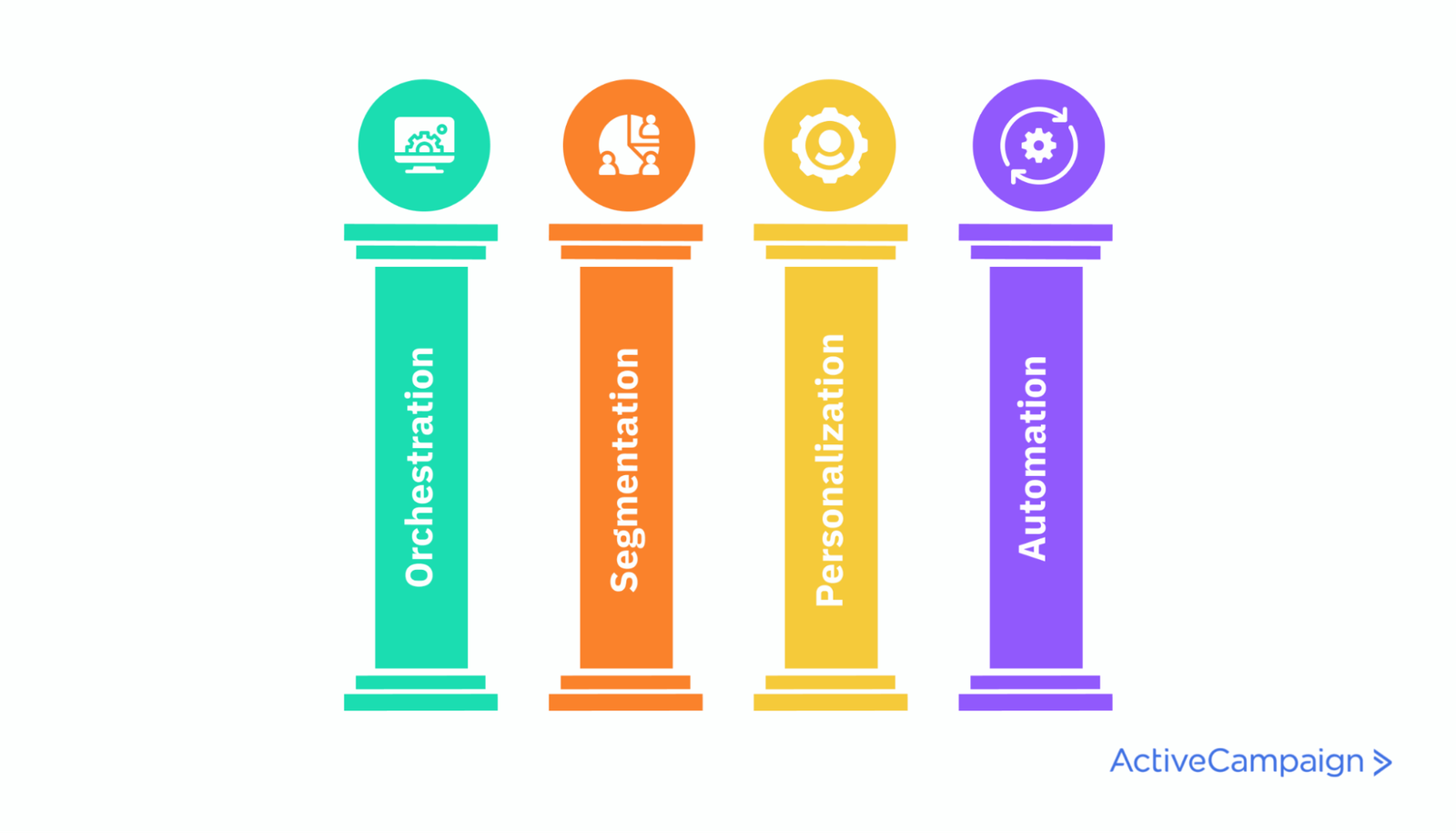
- Orchestration: Look at your entire customer journey and identify connections between your channels and platforms. ActiveCampaign helps you connect these tools to provide a better customer experience.
- Segmentation: Find patterns in your customer data and create lists, so you can personalize your marketing and sales efforts.
- Personalization: Use customer data to create personalized experiences that entice them to buy. The closer you can get to individualized attention, the better.
- Automation: Leverage AI and other automation tools to efficiently create personalized and positive customer experiences at all of your touch points.
Creating a customer experience strategy ensures you put the right amount of effort and resources toward cultivating a good customer experience. This way, you’ll prioritize customer experience rather than treating it as an afterthought.
What does a great customer experience look like?
If you ask 50 different customers what a good customer experience looks like, you’ll probably get 50 different answers.
(That’s where personalization comes in, but we’re getting ahead of ourselves.)
There are some things that most consumers will look for in a positive customer experience. For instance, 49% of consumers want the customer service agents they interact with to be empathetic. And 62.3% of consumers say the biggest barrier to good customer experience is how easy it is to resolve a problem.
As a baseline, your overall customer experience should:
- Be as easy as possible for the customer: This means fast loading times, short query forms and checkout processes, and a straightforward way to make a purchase.
- Build an emotional connection: Consumers want to feel that your company understands them, and you can demonstrate that through empathy and emotional appeals.
- Accurately address the customers needs and pain points: Use customer journey mapping and target audience research to build a clear picture of exactly what your customers need and how your business can solve them. A mismatch here can sour your entire customer experience.
- Rely on digital tools: Digital customer experiences are in high demand. Think about how to incorporate more digital tools such as chatbots, apps, knowledge management systems, and social media customer service to meet your customers where they are.
Another way to visualize your customer experience is through the sales funnel. You need to understand what the customer experience looks like at every stage of the customer journey.
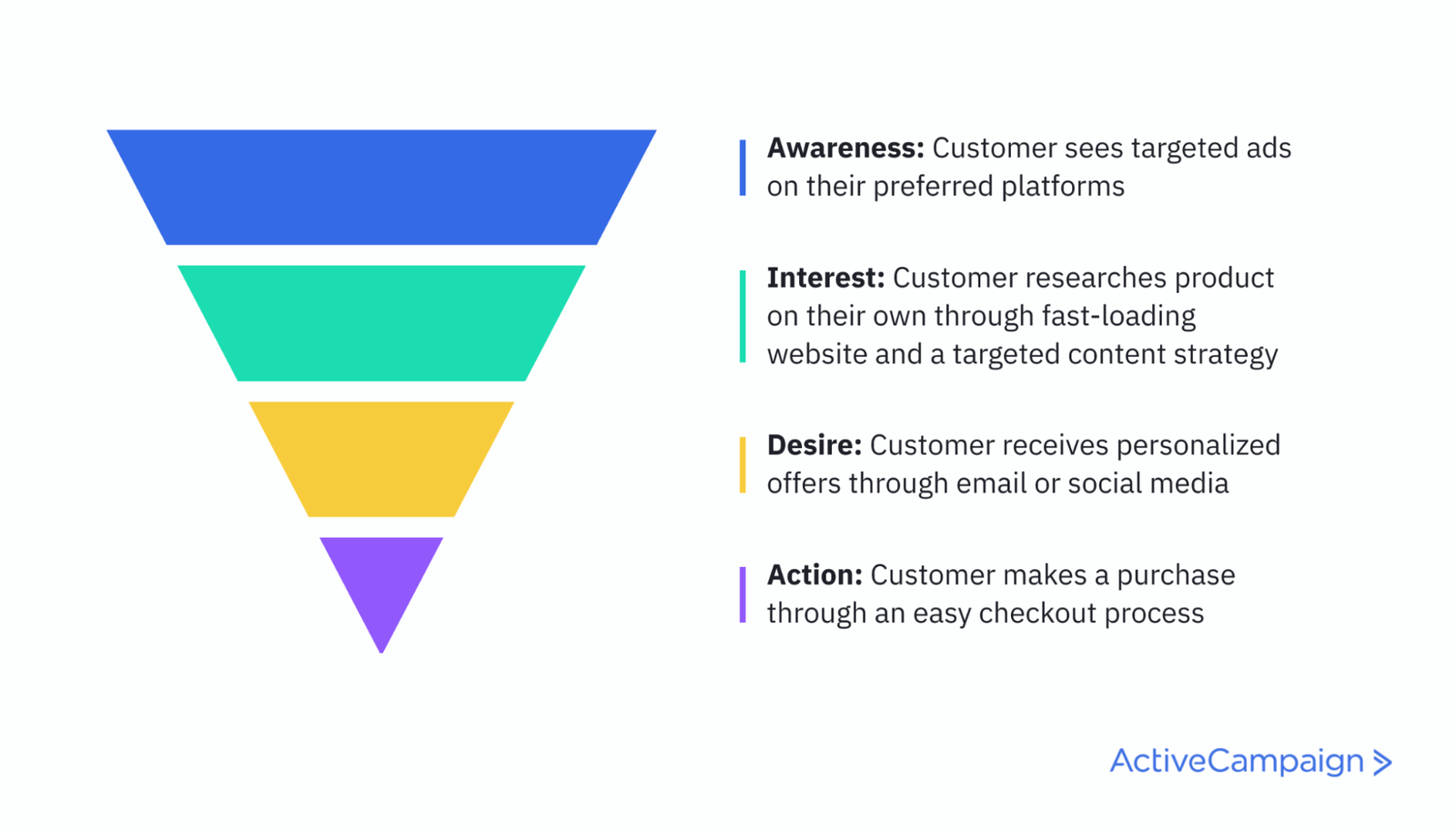
Here’s an example of a basic sales funnel with ideas for improving the customer experience at every stage:
Your customer journey is likely more complex than the funnel in the image, but you can still see how customer experience plays a key role at every stage, from awareness to purchase to cultivating brand loyalty.
5 ways to create a stellar customer experience
A holistic CX strategy can take time to develop, implement, and refine, but you can start working on it right away.
These five tactics will help you start building a better customer experience now.
1. Listen to your customers
Listening to your customers is the single most important thing you can do for customer experience.
That is, as long as you take action based on what your customers tell you.
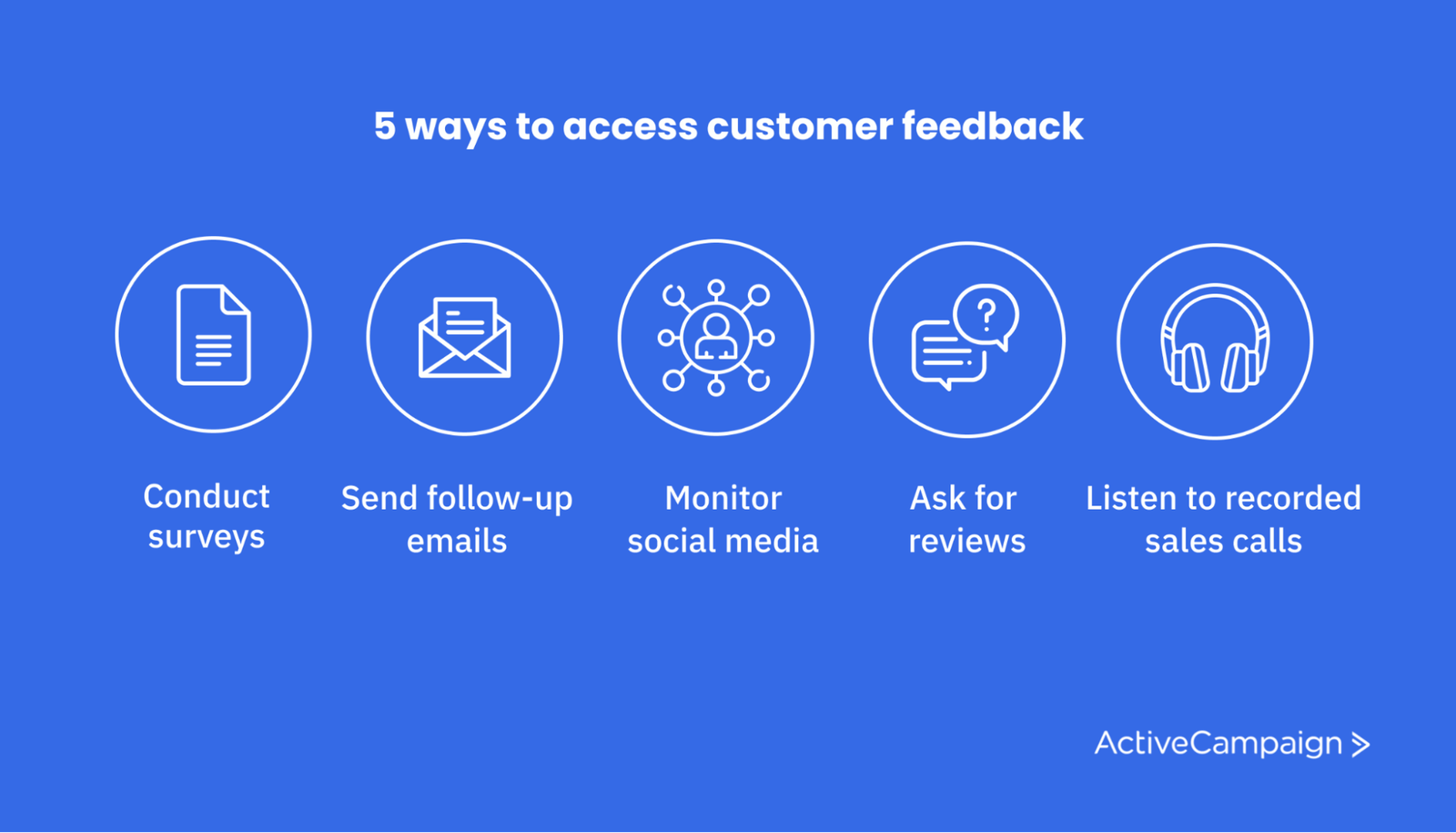
The easiest way to do this is by measuring customer satisfaction. Two-thirds of organizations say customer satisfaction is their number one indicator of customer experience performance, followed by resolution time and net promoter score.
You can find plenty of ways to ask for customer feedback. Conduct customer surveys, ask for reviews on sites in your industry, or monitor social media for customer praise or complaints.
If your business has a call center or customer service phone line, you also can listen to recorded sales calls.
Keep in mind that pestering your customers for feedback can do more harm than good. It’s okay to send a follow-up email or two, but beware of sending more than that.
It’s also smart to offer an incentive for customers to provide feedback when possible. Consider a coupon or exclusive discount for customers.
2. Take employee feedback seriously
Just like you listen to your customers, you also need to listen to your employees.
Employees, especially those in customer service or sales, have direct contact with your customers. They have the best insights into your customer expectations.
You should routinely collect and review feedback from your employees. This could be a monthly or quarterly employee survey, in-person meetings with your top performers, or even a suggestion form where any employee can submit their feedback and ideas.
It’s also important to show employees you’re implementing their feedback. Thank employees who provide new insights or ideas that improve the overall customer experience — especially when they lead to better business performance.
3. Personalize your sales and marketing
76% of customers expect some kind of personalized experience from the brands they interact with.
Customers want to feel known and seen by companies. It’s important to treat them as individuals, not just sales or marketing numbers.

Sales and marketing personalization helps build a closer connection and tap into customer emotions, both of which lead to better customer experiences. And with marketing automation tools like ActiveCampaign, you can curate highly personalized experiences at scale.
Personalization is most commonly leveraged by marketing teams. 46% of marketers use personalization to recommend new products to customers, while others use it for customizing emails, suggesting helpful content, or guiding customers toward their next action.
Increasingly, companies are leveraging personalization outside of marketing too. 46% of businesses use personalization tactics to offer predictive customer service. In this strategy, they anticipate and address customer needs as early as possible.
The best part? Personalization offers an excellent return on investment. 26% of marketers saw an ROI of between three and five dollars on personalization efforts, and some saw an ROI as high as $20.
4. Develop an omnichannel strategy
You probably understand the importance of having a presence on multiple channels. But to provide the best customer experience, it’s time to level up to an omnichannel strategy.
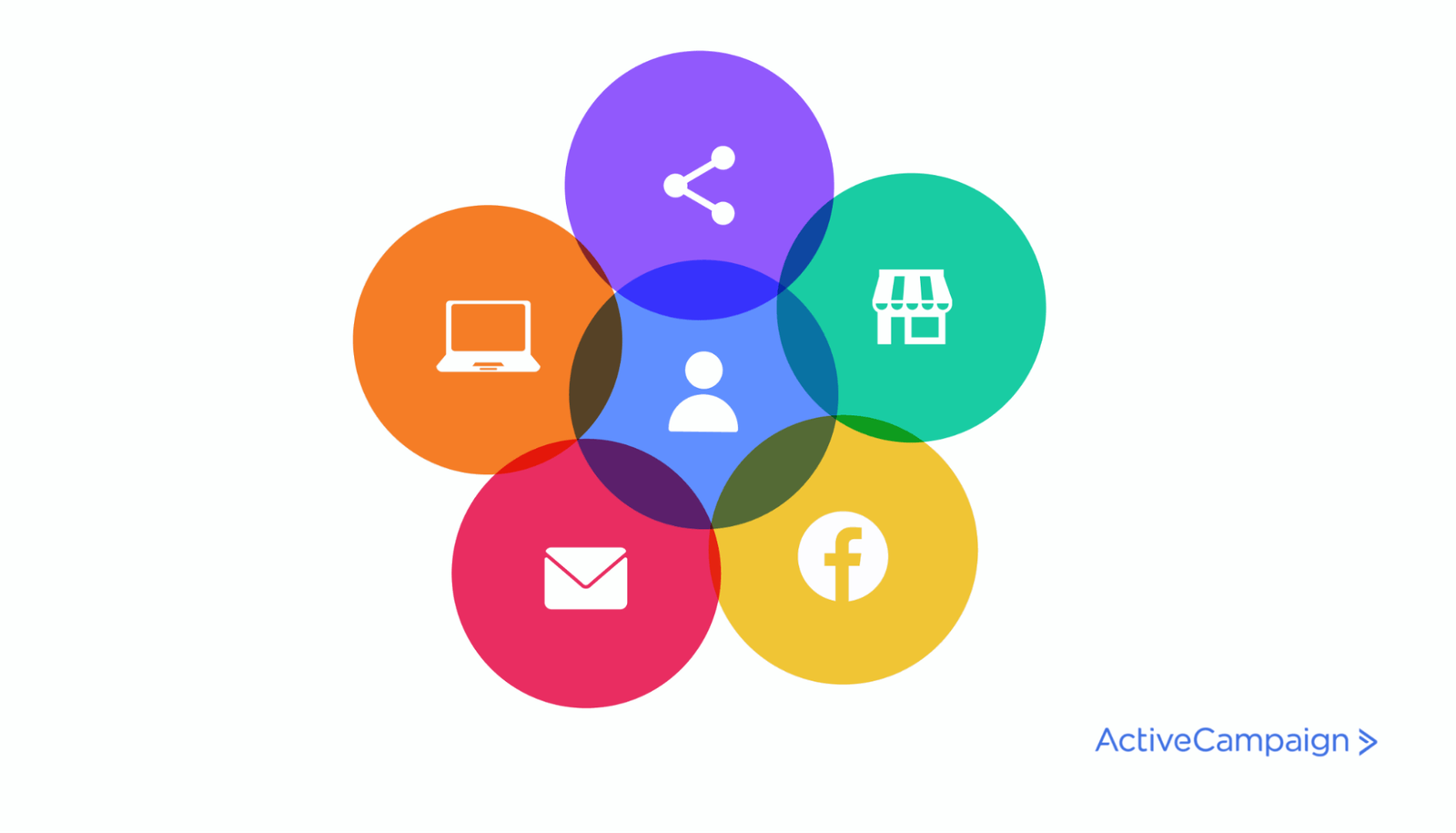
In an omnichannel strategy, you connect your customer’s experiences across channels. While you might have a presence on Facebook, email, and in a physical store, a multichannel strategy keeps these separate.
In omnichannel, they all work together to create an immersive customer experience.
For example, in an omnichannel strategy, a customer may start to research a product on their phone. You can then send them an email for an in-store offer at your closest location. When the customer arrives, they can get more information on the product they’re looking for through your mobile app. Later on, the customer may see social media ads for an upcoming sale at the same store.
Omnichannel strategies are responsive to the customer’s needs and actions. When done right, you’ll be able to provide personalized offers as they move between channels.
And considering that 64% of customers started using a new digital channel in 2020, omnichannel is a smart move for virtually every company.
5. Implement self-service options
Digital customer experience relies heavily on a key trend: self-service options for customer service and issue resolution.
Rather than making a customer wait for your contact center to open or require them to speak with a sales rep, self-service solutions aim to help customers to get answers to common questions quickly.
Consider that 43% of customers prefer to use voice options to contact customer service.
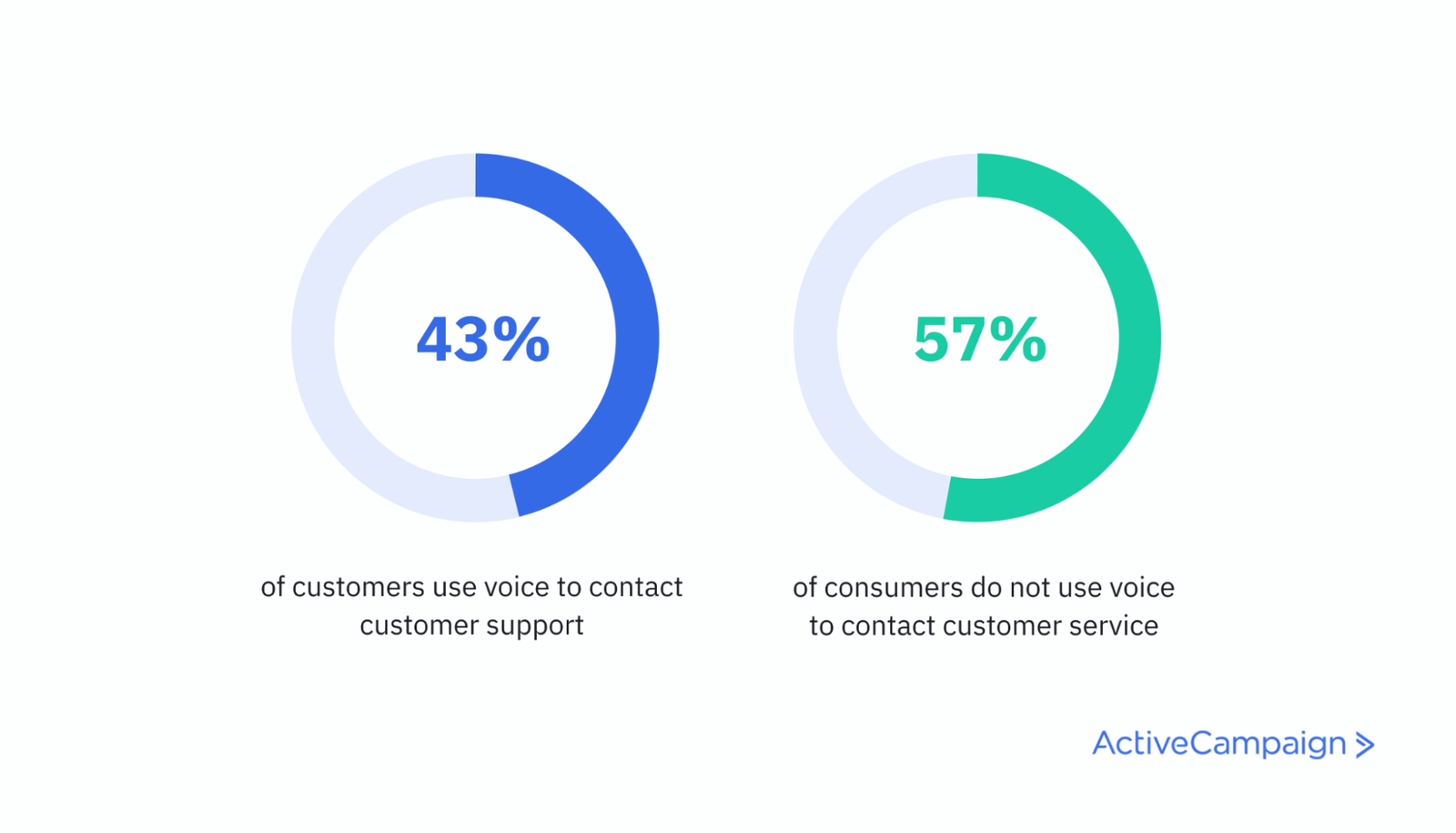
That means 57% of customers are interacting with customer service through non-voice activated mediums such as chatbots, FAQs, email, etc.
A popular way to provide self-service support is through a robust FAQ or help center on your website. To build this tool, you can look at old customer service records and speak with your employees to identify the most common issues that customers can likely resolve on their own with little guidance.
Chatbots are another handy self-service solution. These tools mimic live chat through the use of AI and automation. Building a chatbot requires the same kind of knowledge that you collect when building FAQ content.
Improve your CX strategy today
Cultivating a positive customer experience is critical for any business. Consumers make buying decisions based on your business’s ability to provide empathy, personalization, and customer service.
Use these strategies to improve your customer experience. Above all, remember to listen to your customers and keep them at the forefront of your entire business strategy.









